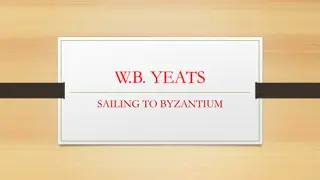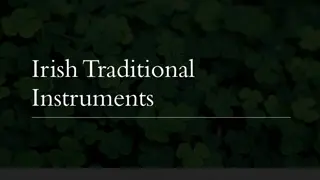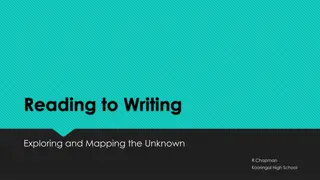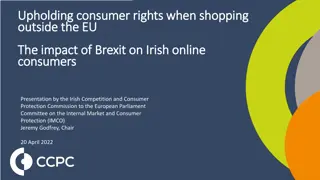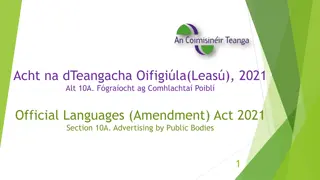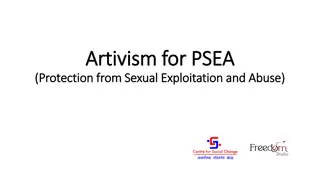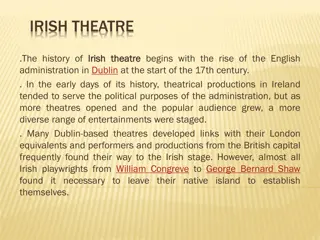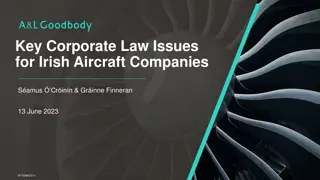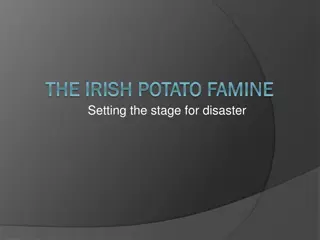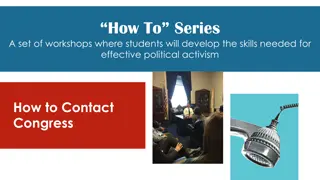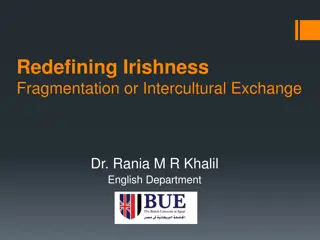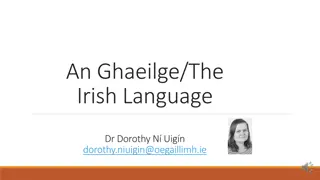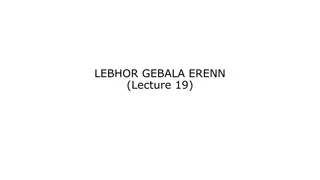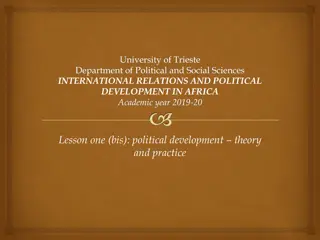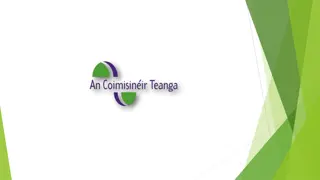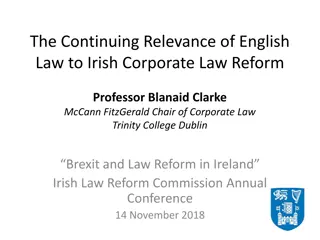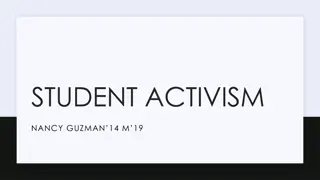Evolution of Irish National Symbols and Political Activism
The evolution of Irish national symbols like the shamrock, the birth of political activism among Ulster Presbyterians, and the origin of Irish coffee are discussed in the context of historical events and societal changes. The significance of symbols in shaping national identity and the impact of political movements in seeking social justice and constitutional reforms are highlighted.
Download Presentation

Please find below an Image/Link to download the presentation.
The content on the website is provided AS IS for your information and personal use only. It may not be sold, licensed, or shared on other websites without obtaining consent from the author. Download presentation by click this link. If you encounter any issues during the download, it is possible that the publisher has removed the file from their server.
E N D
Presentation Transcript
The Context for CRED Pete Shirlow Queen s University Belfast
You coasted along To larger houses, gadgets, more machines To golf and weekend bungalows, Caravans when the children were small, the Mediterranean, later, with the wife. When that noisy preacher started, he seemed old-fashioned, a survival. Later you remarked on his vehemence, a bit on the rough side. But you said, admit, you said in the club, You know, there s something in what he says .
Caif Gaelach The coffee was conceived after a group of American passengers disembarked (Shannon) from a Pan Am flying boat on a miserable winter evening in the 1940s. Sheridan added whiskey to the coffee to warm the passengers. After the passengers asked if they were being served Brazilian coffee, Sheridan told them it was "Irish coffee . It was then spread to USA by a travel writer.
The shamrock first began to change from a symbol purely associated with St. Patrick to an Irish national symbol when it was taken up as an emblem by rival militias, during the turbulent politics of the late eighteenth century. On one side were the Volunteers (also known as the Irish Volunteers), who were local militias in late 18th century Ireland, raised to defend Ireland from the threat of French and Spanish invasion when regular British soldiers were withdrawn from Ireland to fight during the American Revolutionary War. On the other side were revolutionary nationalist groups, such as the United Irishmen. The United Irishmen adopted green.
"The radical biblicism of Ulster Presbyterians meant that they took most seriously scriptural concern for social and political justice. When oppressive, despotic government denied them civil and religious liberty, liberal Presbyterians in late 18th century Ulster began to clamor for constitutional reform of their (Irish-based) British parliament. Political questions, they contended, were ultimately moral and religious concerns and Presbyterians saw it as their duty to create a just society; the state needs be 'born again.'
The remarks attributed to National Volunteer and poet, Francis Ledwidge, who was to die in preparation of the Third battle of Ypres in 1917, perhaps best exemplifies the changing Irish nationalist sentiment towards, enlisting, the War, and to the Germans and British. "I joined the British Army because she stood between Ireland and an enemy of civilisation and I would not have her say that she defended us while we did nothing but pass resolutions". After the leaders of the 1916 Easter Rising were executed during his military leave, he said: "If someone were to tell me now that the Germans were coming in over our back wall, I wouldn t lift a finger to stop them. They could come!"
Complicated Histories? 1) Brian Boru defeated the Vikings with the assistance of Vikings! 2) The first Attorney General of NI was a Catholic Official unionist; 3) In 1155, the Pope issued a papal bull (known as Laudabiliter) that gave Henry II permission to invade Ireland as a means of strengthening the Papacy's control over the Irish Church. The Laudabiliter enforced Papal suzerainty not only over Ireland but of all islands off the European coast, including Britain, in virtue of the Constantinian Donation. 4) To the Irish the Williamite War was known as An Cogadh na d Righ (the war of the two Kings) but in reality it was merely a part of the dispute between William and King Louis XlV of France. William supported by Pope, no white horse and the decisive battle was Aughrim; 5) Cypriot teachers? 6) What about the Suffragettes?
In Ulster where over 20 suffrage societies Dora Mellone of the northern committee of the IWSF spoke in Hyde Park in London in 1913 and told the huge crowd that Irish suffrage societies were; Of all shades of political opinion, we have nationalists and unionists, orange and green, extremist and moderate. These women agreeing in nothing else agree on this one point... no one else has ever done this; the IWSF is the only political organisation which has ever held the north and south together..
1914 20 post boxes were attacked in Belfast Abbeylands, the Whiteabbey mansion of Sir Hugh McCalmont was attacked, Orlands, another large house at Kilroot near Carrickfergus was destroyed by a fire set by the suffragettes. Many of the attacks were aimed at property associated with unionism. Windows were smashed at unionist headquarters and members of the WSPU broke into the home of James Craig, the unionist deputy leader, and the home of the Lord Mayor of Belfast was also targeted. Public property also came under attack. Newtownards Race Stand in Co Down, Ballylesson Church in Lisburn. Golf greens were destroyed, Cavehill Bowling and Tennis Club in north Belfast was extensively damaged after an early form of petrol bomb attack, the Tea House at Bellevue and the Annadale Hall in south Belfast were destroyed by incendiary devices. One suffragette even forced her way into the offices of Ulster's most prominent newspapers offices to slap the faces of their editors who disagreed publically with the suffragette militancy. On the 3rd July 1914 the suffragettes bombed the Church of Ireland cathedral in Lisburn.
Moving On. Plan Aims and Objectives Key Indicators Increase pupil awareness Establishing what we want to deliver; Determining key messages and concerns (Cypriot teachers); How do we measure success? What will be the stages of development? Who will lead? How do we ensure that this is not a going through the motions exercise? Challenging and channelling commitment!
Plan Delivery Key Indicators Reflecting our ambition to progress with suitable resources Do you possess the materials to present evidence-led histories? How do we produce materials and knowledge transfer between staff and stimulating a culture of opportunity? How do we develop confidence to engage in alternative thinking? How do we share knowledge and experience? How do we sustain the project? What is it that we are promoting?
Possible outcomes Plan Possible Outcomes Key Indicators Futures What would we wish to? Is relationship-building enough? The opportunity of knowledge? Knowledge is transferred, commitment is achieved and pearls are cast!


